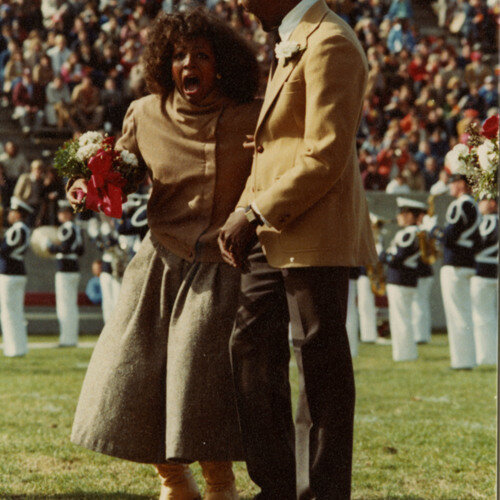
EXHIBIT
WOMEN OF COLOR
PROFILES IN ACHIEVEMENT
EMBRACING BLACK BEAUTY
Jacqueling Dandridge pictured top left
Marva Felder grew up in Chester, Virginia in a family of hard-working, educated individuals. Her high school was semi-integrated, with an 80:20 ratio for white students to black students, but she still noticed that she was the only black student in most of her classes.
In 1978, Felder enrolled in VPI. Calvin Jamison, a black student, greeted Felder by name right as she walked onto campus, as he had studied the faces of every student that had been accepted. He tried his best to make students like Felder feel at home and welcomed on campus. She had white and black friends on campus and ignored any racism she faced.
Felder became active in student life, and served on the Budget Commission of Student Affairs when the Black Organizations Council had been added. She worked at Squires Student Center, managing the building to make some extra money. She was also a member of the Black Student Alliance. During her junior year, she was asked if she would run for homecoming queen. She declined, and thought nothing more of it.
Marva pictured in front row, 2nd to the right
She had pictures taken of herself to be posted on campus, soliciting votes for her as a homecoming princess. Felder says she remembers walking by them and hating her pictures, even though everyone else told her they loved them.
Felder quickly grew tired of being paraded around silently. “I needed to do more than just try to look pretty. I just, I didn’t like that.” So she then began introducing herself to each table and telling them about herself in her own way. By the end of the day, her voice was hoarse from talking. Students loved that she was being herself, so much so that students had walked up to her afterwards to tell her that they wanted to introduce themselves to her. Felder stated,"You know what, the only thing I did was talk and have people get a chance to get to know who I was. So if they decided to vote for me they would know who they were voting for, not just what they voting for.”
During the interview component of the competition, Felder answered all the questions truthfully and thoroughly, while maintaining a flow in the conversation. Felder wanted to be genuine in every single part of this process. “I never made a whole lot of any of this because I’d never thought I’d win. It was I’m going to be the best representative I can be for the organization that asked me to do it and voted on me and that was it.”
Felder still believes this was important to the black community at Virginia Tech: “I think it helped to have the black students stand out a little bit more. I think it helped them to accomplish the goal of becoming more involved in the community. To become more involved. To become more noticed on campus as a functioning entity, as a functioning group.”
Felder won her title only a few years after the first Miss Black America was televised, and she was well aware that many United States beauty standards then and now center white femininity as ideal.
She explains society’s reluctance to embrace black beauty, “if you look up the definition of black, they talk about darkness. The negative side. It all has negative connotations to it whereas if you look up white, there is purity and so forth… my concept black is beautiful comes from us being taught that there is nothing wrong with our color… You can be as beautiful outside as you want to be, but if you have a negative personality, the beauty will diminish.”
















